AMD's high-end gaming GPU sales surge in China following Nvidia RTX 4090 ban - shortages may extend into 2024
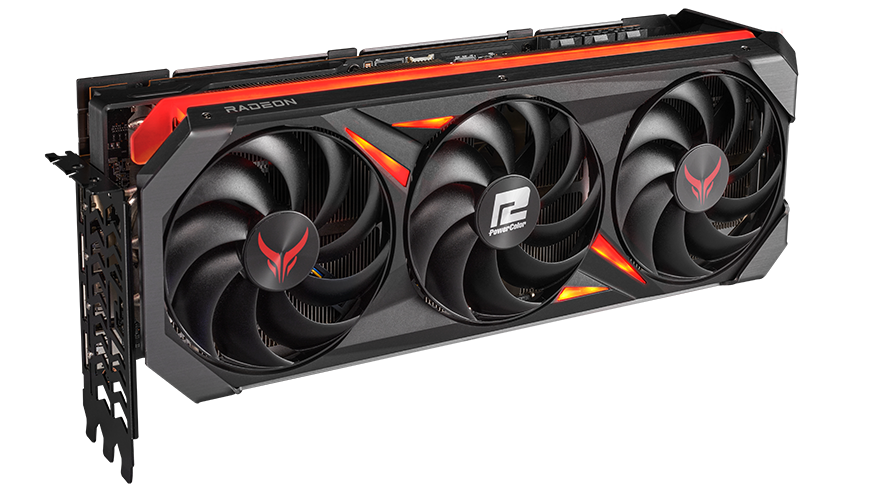
Following the U.S. export ban of the RTX 4090 and other Nvidia GPUs to China, Chinese consumers are looking for alternatives. Existing high-end RTX cards are being stripped down and repurposed into AI accelerators, and even AMD GPUs from suppliers like Dell are being restricted from sale to China, though that's a Dell decision rather than a government requirement.
Chinese site Expreview reports that AMD's RX 7900 XTX and 7900 XT cards are experiencing a significant surge in sales thanks to the RTX 4090 restrictions. AMD's GPUs aren't banned, as they fail to reach the performance levels defined by the U.S. Department of Commerce. The RX 7900 XT has a TPP rating of 1,955 — well short of the 4,800 level that falls under the restrictions. The RX 7900 XT is even lower, with a TPP of just 1,652.
AMD has indicated that the heightened demand for the RX 7900 GPUs from their Chinese AIBs is too high for them to meet, which is already resulting in a shortage. This shortage seems limited to Chinese AIBs for now, with U.S. consumer pricing currently unaffected. That may change in the future, however, especially if AMD can't correct the shortage before Q1 2024. That's when the shortage is expected to extend to consumers.
The main point of the export restrictions is to limit China's progress on AI and supercomputers. While the AMD RDNA 3 architecture did add some AI processing cores, they're not nearly as numerous or potent as Nvidia's Tensor cores. As an example, the RTX 4090 has up to 330 TFLOPS of FP16 throughput, while the RX 7900 XTX only offers up to 123 TFLOPS of FP16 compute. It's unlikely for AMD to close the gap any time soon, at least with the consumer parts.
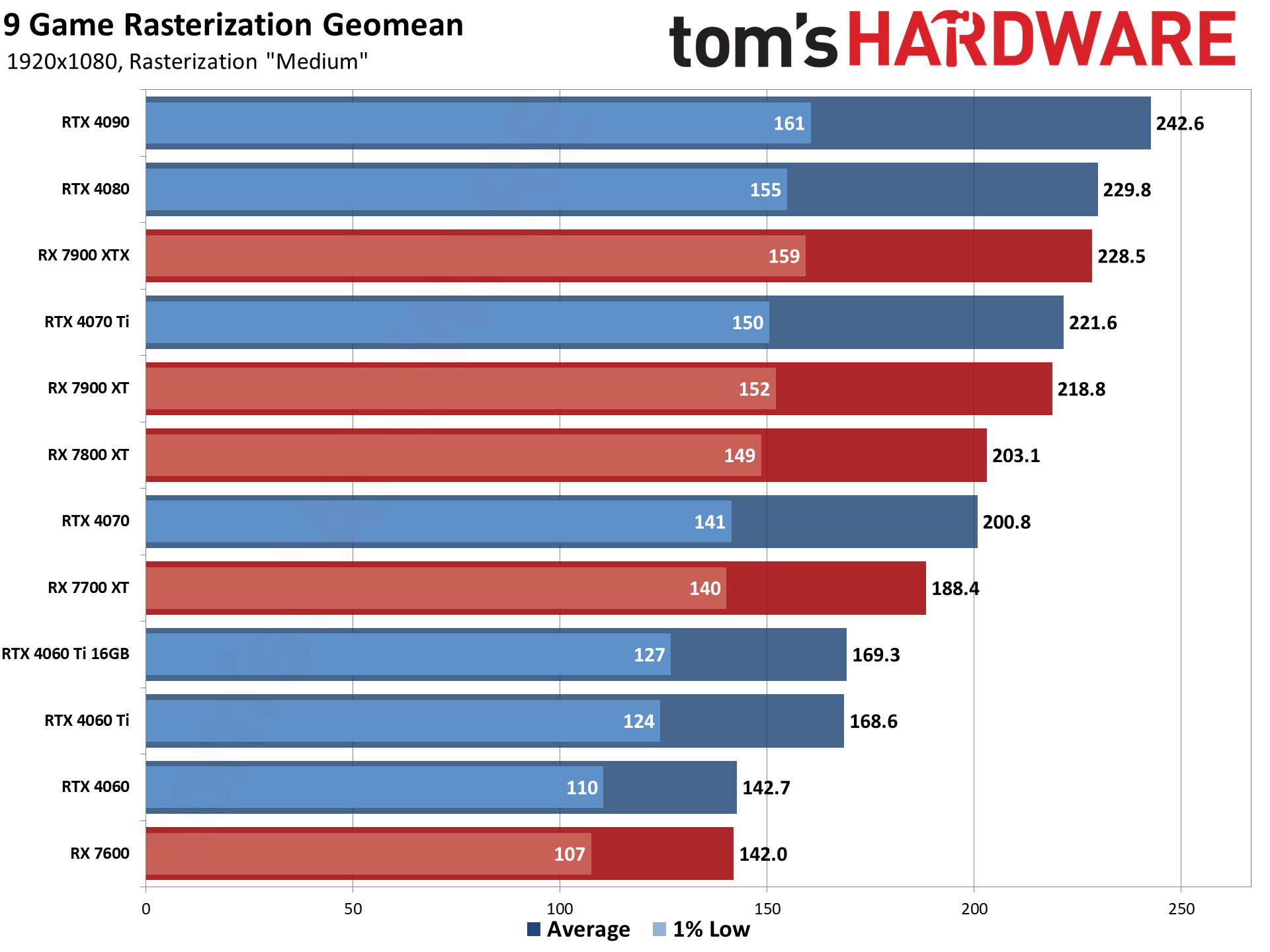
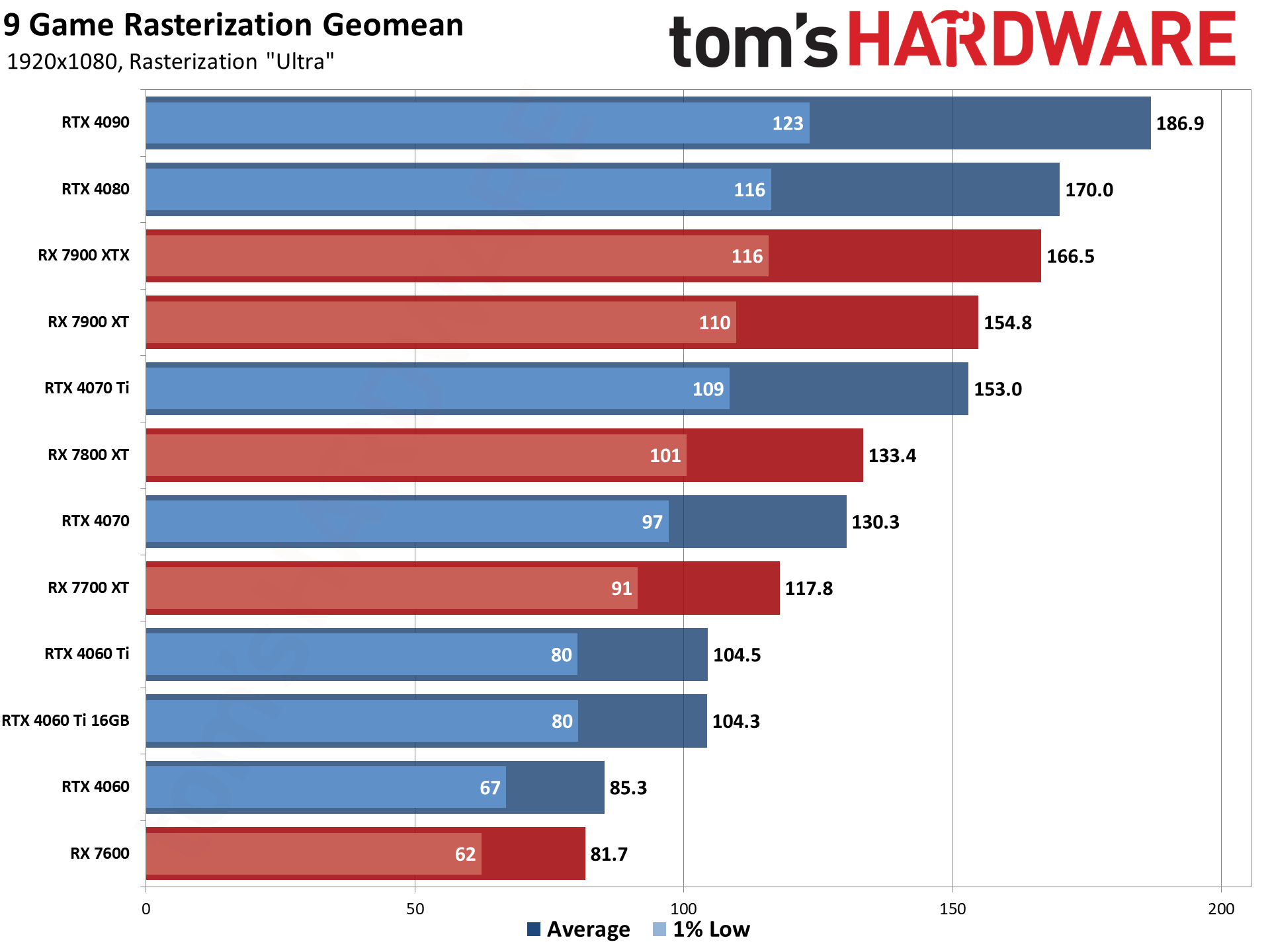
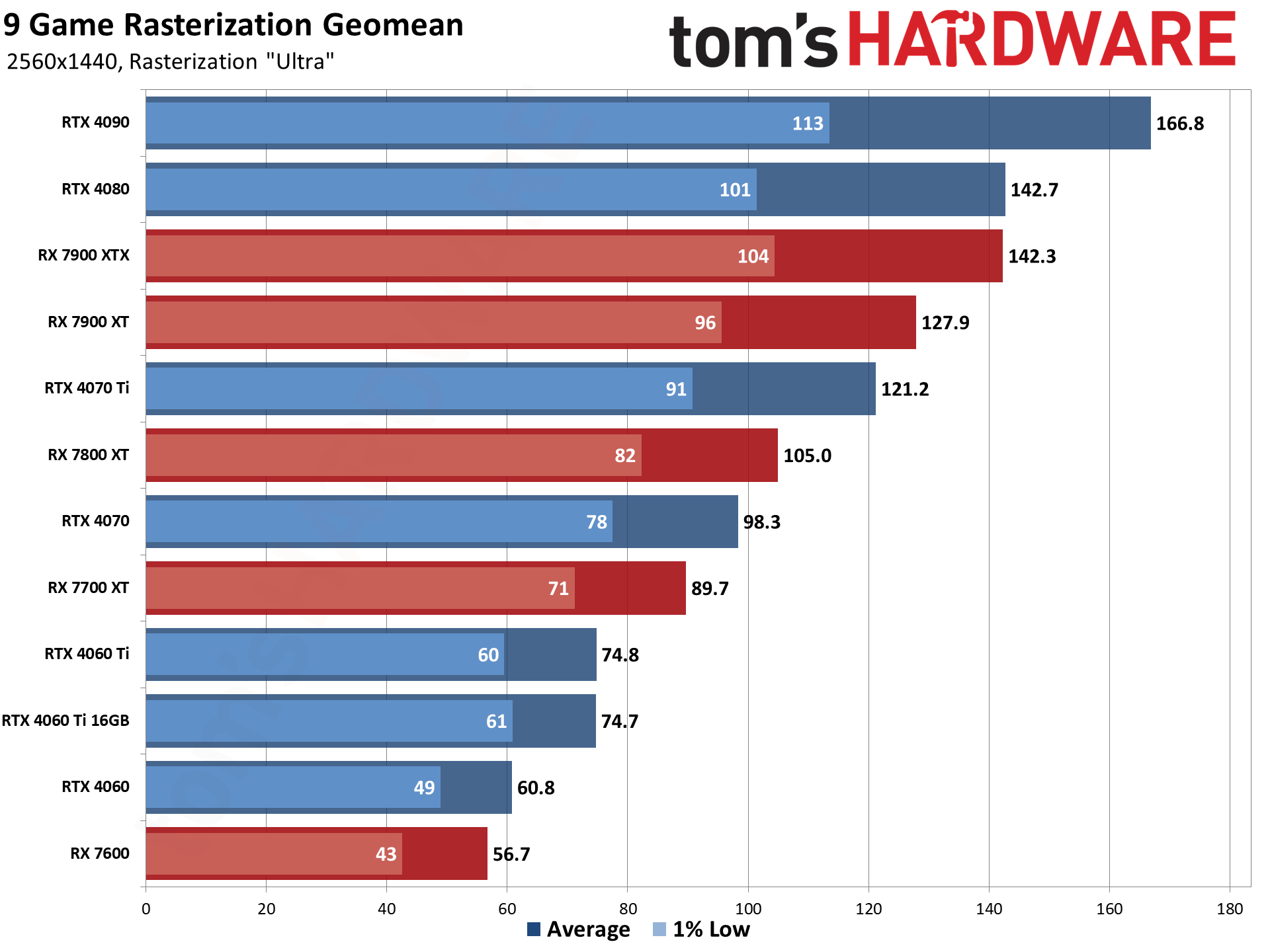
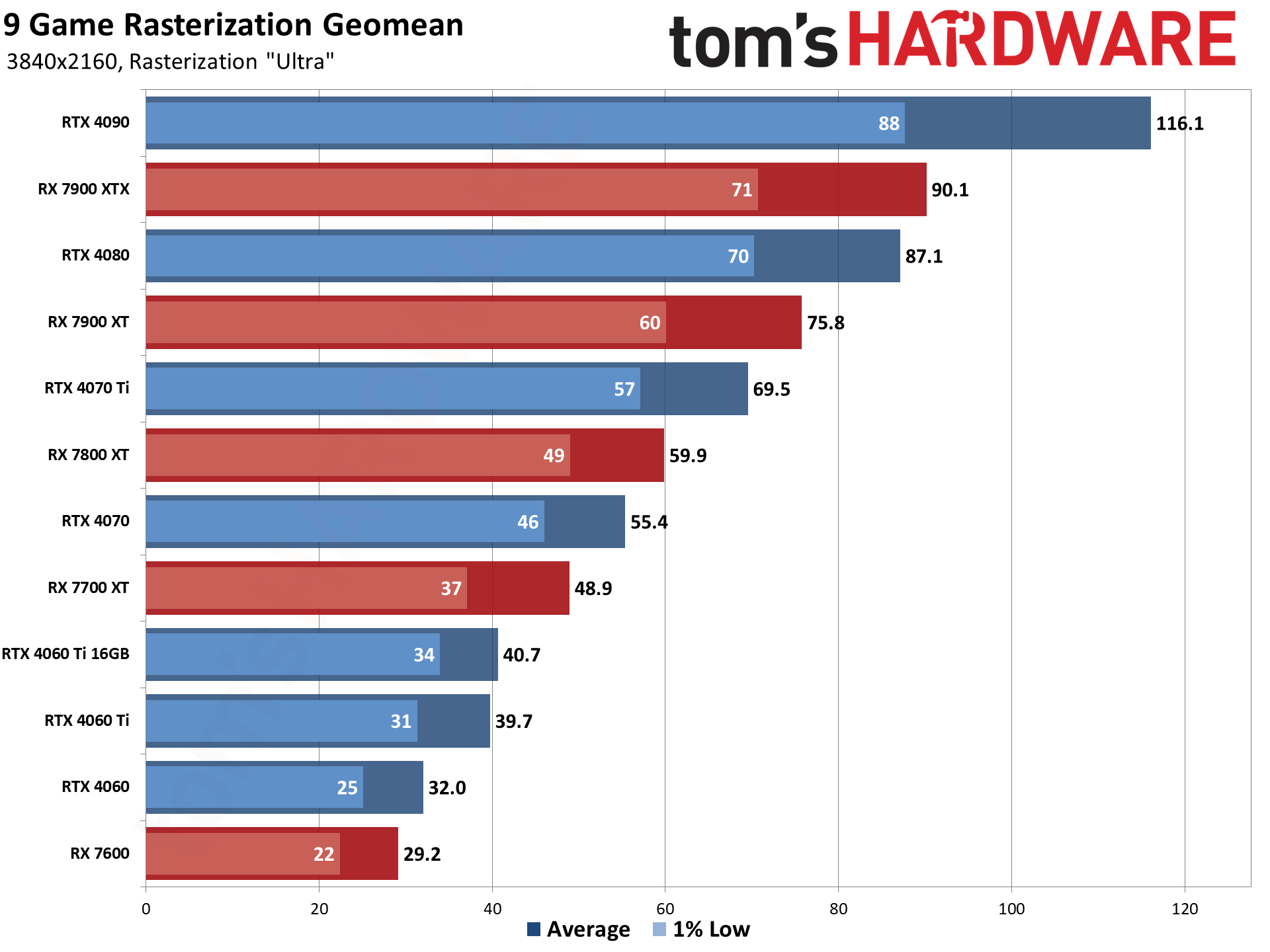
Meanwhile, the RX 7900 cards do become considerably more competitive with Nvidia cards when you evaluate rasterized gaming performance and disregard ray-tracing and DLSS performance. The RTX 4090 retains the top spot across our tested resolutions and settings, but the RX 7900 XTX trades blows with the RTX 4080, and does so at a lower price.
Long-term, it's unlikely any of the export restrictions will stop sufficiently determined Chinese hardware enthusiasts (or others) from getting their hands on an RTX 4090 or RX 7900 XTX. In the short-term, however, Chinese consumers may be willing to give AMD a closer look. The 7900 XTX has the same 24GB of VRAM as the RTX 4090, and it competes well against the RTX 4080.
Still, the Nvidia RTX 4090 isn't going to become more common in China, even if the rumored RTX 4090 D makes an appearance — that will still be a lesser version of the RTX 4090 and AD102, after all. In the near term, perhaps lasting into early 2024, AMD RX 7900 shortages in China seem likely to continue.
Get Tom's Hardware's best news and in-depth reviews, straight to your inbox.

Christopher Harper has been a successful freelance tech writer specializing in PC hardware and gaming since 2015, and ghostwrote for various B2B clients in High School before that. Outside of work, Christopher is best known to friends and rivals as an active competitive player in various eSports (particularly fighting games and arena shooters) and a purveyor of music ranging from Jimi Hendrix to Killer Mike to the Sonic Adventure 2 soundtrack.
-
bit_user The only upside I see to this situation is AMD finally getting some good volume on RDNA3 cards. For the past year, I think the graphics business has been a big loser for them, stemming initially from oversupply of RDNA2, in combination with a demand collapse coinciding with the launch of RDNA3 and a much better showing from Nvidia than they made with Ampere.Reply
Let's just hope AMD didn't scale back their RDNA4 plans and activities too far. -
vanadiel007 I enjoy my 7900XTX, and I believe I made the right choice with FSR3 and especially the Adrenalin software package. It's so much better than Gforce now and that 1990 Nvidia control applet that sits in the system tray.Reply
It might sound odd, but in my opinion AMD software support is years ahead of the Nvidia software support.
Looks like I got it before the price hikes, making it an even better deal. -
Order 66 Reply
I don't think they necessarily will though as the main focus of the export restriction was AI GPUs, last I heard, AMD's AI GPUs weren't as good as Nvidia's.thisisaname said:All good for AMD until they too get banned their export restricted. -
thisisaname Reply
True not as good as Nvidia but does the US government think they are too good to allow the Chinese to have?Order 66 said:I don't think they necessarily will though as the main focus of the export restriction was AI GPUs, last I heard, AMD's AI GPUs weren't as good as Nvidia's.
An answer to that question I think neither of know but in time we will find out, we live in interesting times :unsure: -
bit_user Reply
It'll hit the RTX 4080 and RTX 4070 Ti, first.thisisaname said:All good for AMD until they too get banned their export restricted.
According to the formula, here are their respective TPP scores.
Nvidia:
Model
Tensor fp16 TFLOPS
TPPRTX 406060960RTX 4060 Ti881408RTX 40701171872RTX 4070 Ti1602560RTX 40801953120RTX 40903305280
AMD:
Model
Boost (GHz)
CUs
Tensor fp16 TFLOPS
TPPRX 76002.663243696RX 7700 XT2.5454701125RX 7800 XT2.4360751194RX 7900 GRE2.2580921471RX 7900 XT2.40841031652RX 7900 XTX2.50961231966
I included the Boost clocks and number of CUs, because I used this formula to compute the Tensor TFLOPS for AMD:
https://gpuopen.com/learn/wmma_on_rdna3/
Even the RX 7900 XTX is well below the current threshold of 4800. They'd either have to restrict it by some other metric or way lower the threshold. -
_Shatta_AD_ It’s just going to move down the food chain, next they’ll ban 4080, 4070 Ti and soon it’ll be 4060s and their AMD counterparts. All these ineffective policies are only hurting us the consumers and causing chaos and instability in the supply chains.Reply
Scalpers and back channels will benefit the most while artificially driving up a pseudo hike in prices. -
bit_user Reply
I'm not sure about that. The RTX 4090 is really a lot more powerful than the others. I'm not saying it's definitely the last to get banned, but it certainly could be._Shatta_AD_ said:It’s just going to move down the food chain,
I will go so far as to say the RTX 4070 Ti is quite likely safe, both on the basis of its memory capacity and bandwidth. These are very important factors for AI.
Its price already made it non-viable for most consumers. So, the consumer impact should be a lot less than if they started banning the sub-$1000 cards._Shatta_AD_ said:All these ineffective policies are only hurting us the consumers and causing chaos and instability in the supply chains. -
watzupken Reply
If US block say the RX 7900 XTX, they will likely block the RTX 4080 as well. You need to remember that the purpose of the block was meant to limit China from hardware that accelerates AI. So with Nvidia having dedicated Tensor cores on their GPU and therefore, better AI performance, this is now working against them.thisisaname said:All good for AMD until they too get banned their export restricted. -
bit_user Reply
If they continue using the TPP metric, then the RTX 4080 would actually be next. However, the 7900 XTX has more memory capacity and bandwidth, which are also relevant. See my table, in post #7.watzupken said:If US block say the RX 7900 XTX, they will likely block the RTX 4080 as well.
If Nvidia had it all to do over, I'm sure they wouldn't change a thing. When he started out, Jensen probably never even dreamed of this happening:watzupken said:You need to remember that the purpose of the block was meant to limit China from hardware that accelerates AI. So with Nvidia having dedicated Tensor cores on their GPU and therefore, better AI performance, this is now working against them.
https://www.tomshardware.com/news/nvidia-set-to-become-semiconductor-industrys-largest-firm-in-2023-according-to-tsmc-chairman
Let's not forget that we've been down this road before. Prior generations of CPUs, GPUs, and even the Sony PS3 were banned for export to certain countries, because it was thought they had enough compute power to be useful for nuclear weapons development.